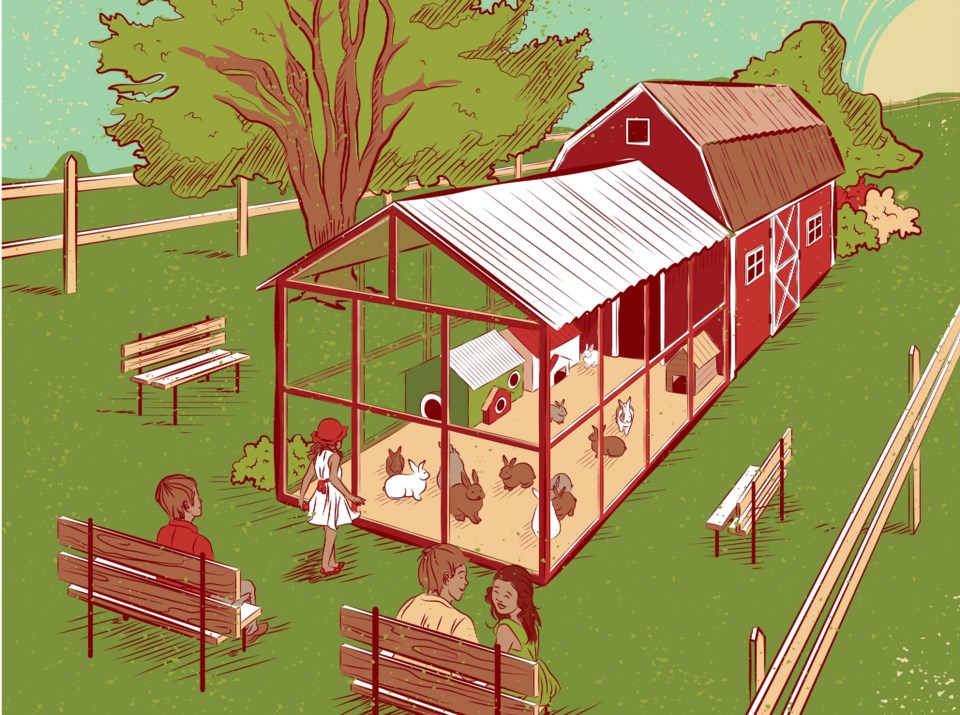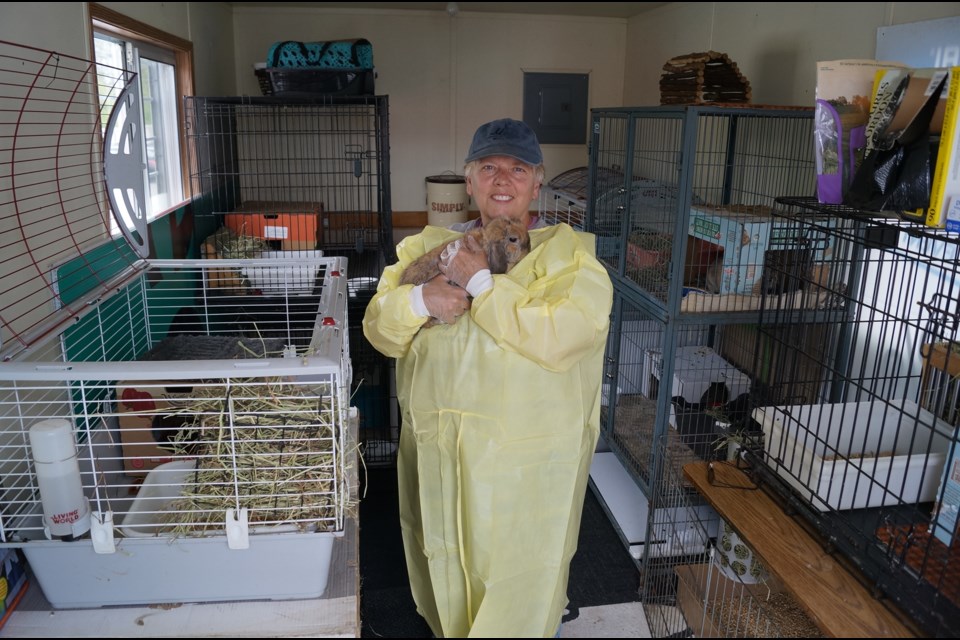Dumped and abandoned rabbits are breeding out of control in Richmond and have nowhere to go, according to the city’s foremost advocate for them. Meanwhile, the lethal Rabbit Hemorrhagic Disease (RHD) threatens the population, as well as pet bunnies across the city.
In the near future, either the city will be overrun with feral rabbits, stemming from a spring “bunny boom,” or dead ones will lay ubiquitously in plain sight.
Sorelle Saidman, founder of Rabbitats Rescue Society, says either way it is a crisis situation for the animals.
“Rabbits are falling through so many cracks — they are classified as wildlife, pets and agriculture so there is no one overall group responsible for them or advocating for them. The dumped pets' feral offspring have even fewer advocates,” she said.
Her group — which will host a community meeting May 23 at 6:30 p.m. at Cambie Community Centre — has no more capacity to take in Richmond rabbits and the City of Richmond has not taken an active role in finding the animals a sanctuary, she said.
Saidman estimates at least 2,000 rabbits are in the wild in Richmond at the moment. They are normally found in green spaces, parks and farms.
“We get multiple calls a week from people with stray rabbits on their properties or in distress on the streets,” said Saidman.
Rabbitats is a Richmond-based organization with a small trailer near Richmond Auto Mall where it takes care of rabbits. It has a larger sanctuary in Surrey. Regional Animal Protection Society operates the city’s overrun animal shelter but has stopped accepting domesticated rabbits for the past year, said Saidman. Even if it did accept the bunnies, the shelter isn’t enough, said Saidman, adding that RAPS is prioritizing dogs.

Hence, she is asking the city to provide or help find a sanctuary Rabbitats can work from.
“A small investment — much less than the property damage the rabbits are now causing to city landscapes and private property — will trap and house the rabbits for life. The city can be rabbit-free. Kelowna allocated minimal funds to a rescue 10 years ago; they picked up and housed 800 rabbits and they have for the most part stayed under control,” said Saidman.
City spokesperson Ted Townsend noted the city has chosen not to get permits to trap and collect rabbits under the Wildlife Act.
“The City’s approach is to educate the public and enforce civic bylaws related to the release and feeding of rabbits, which are prohibited. Feeding rabbits may seem humane, but it actually contributes to the problem as it leads to increased breeding and increased populations,” said Townsend, via email.
He noted the city banned rabbit sales in 2010.
“The role of the municipal shelter is to facilitate temporary medical care and adoption, not to operate as a sanctuary,” explained Townsend.
City council’s environmental liaison Coun. Carol Day said she doesn’t think the city will take action and if the virus spreads, “sad as that is, it is nature’s way.
“We all love bunnies but life takes its course and sometimes we gave to accept that Mother Nature knows best,” said Day.
But Saidman said easy solutions lie in wait. She said a rabbit sanctuary could be placed on the Garden City Lands, for instance.
“Once we have space, we can do a lot more, but we will still need some semblance of city support, e.g. diverting some of the landscaping or city shelter funds or finding some city land that we can build on,” said Saidman.
Community Meeting:
“The community meeting will address the reasons for the rabbit population, discuss where the responsibilities lie, and suggest solutions. We will also provide information on ‘habits of the rabbits’, tips on rabbit-proofing gardens and flower beds, and on the current status of the rabbit hemorrhagic disease virus and how it affects the feral, pet and farm populations among other topics.”



